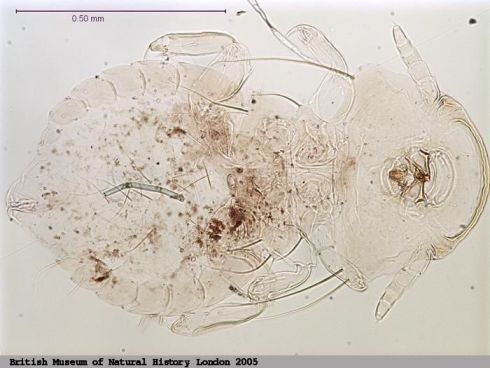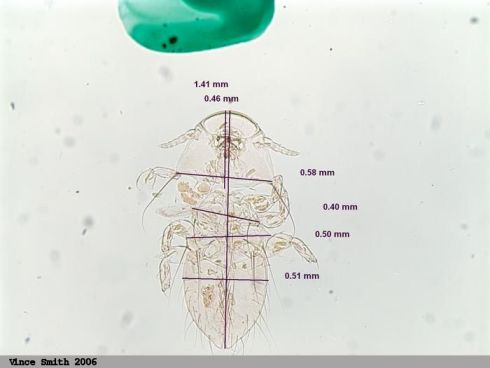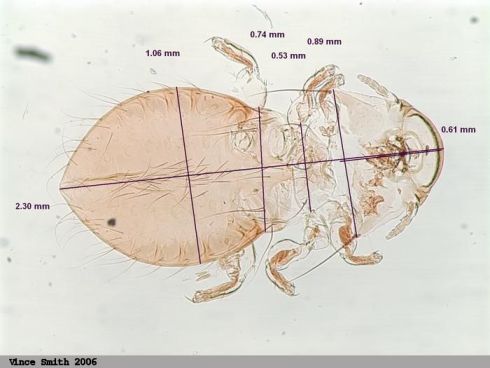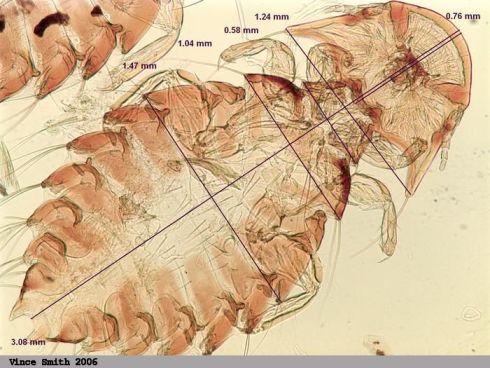
Reproduction and Life cycle
**Put pointer over photo for stage name and source**
The reproduction and lifecycle of Chelopistes meleagridis is very similar to other insects in the family Philopteridae. It begins with the laying of an egg by a female near the base of a feather on the turkey. There is usually one egg, less than a millimeter in diameter, attached to each feather, but can sometimes be as many as 2 or three (Foster 1969 ) The eggs are glued to the base of the feathers to ensure that they will not be scraped off by the turkey while it adjusts and grooms feathers. The feathers underneath the bill are specifically targeted due to the birds inability to access them (Ryder 1967).
The next stage in the life cycle is the 1st stage nymph which measures about 1 millimeter in length and already shows the distinct dome shaped head (Foster 1969). Like all of the stages to come, this nymph is wingless, has two prominent antennas, and a pair of distinct mandibles located in the very center of the head.
The second and third stages are different only in that the later stage is larger due to a longer lifespan. They can be clumped in with the adult nymph stage because they share the same environment on the turkey. There isn't a specific stage (other than the egg) where C. meleagridis cannot move to another turkey (Emerson 1960).
The Adult stage is the final phase in the lifecycle where reproduction occurs. C. meleagridis is dioecious, meaning there are both separate male and female genders. The time between egg and the next generation is about 3 to 4 weeks. From research that has been collected, there is no set stage when transmission from bird to bird will only occur (Ryder 1967).



